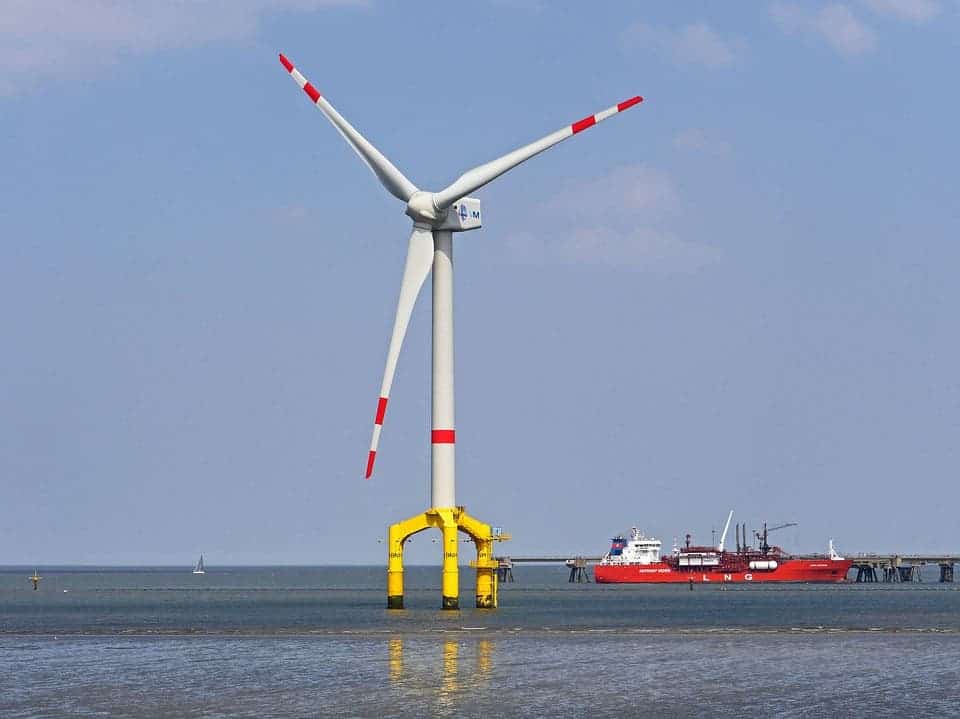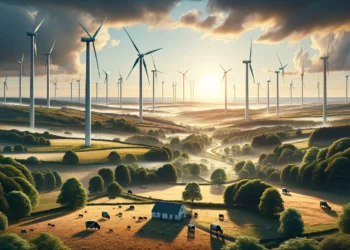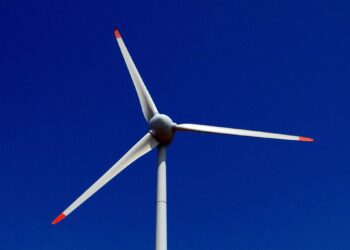Floating wind farms could prove more lucrative than land-based turbines whose ‘sweetest’ real estate is becoming increasingly filled. A new study suggests that offshore wind turbines could provide up to three times more power than terrestrial wind farms of the same size.

Where the wind blows
More than 54 GW of clean renewable wind power was installed across the global market in 2016, marking a year-by-year growth in global wind energy of 12.6% and reaching a total of 486.8 GW.
“Wind power is now successfully competing with heavily subsidized incumbents across the globe, building new industries, creating hundreds of thousands of jobs and leading the way towards a clean energy future,” said GWEC Secretary General Steve Sawyer.
“We are well into a period of disruptive change, moving away from power systems centered on a few large, polluting plants towards markets increasingly dominated by a range of widely distributed renewable energy sources. We need to get to a zero emissions power system well before 2050 if we are to meet our climate change and development goals.”
Some countries have a much larger share of wind energy in their grid than others, for obvious geographical reasons. Uruguay, Portugal, and Ireland can boast over 20% for example, while Denmark gets a whopping 40% of its power from wind turbines.
The problem with wind, however, is that you eventually run out of it. As silly as that might sound, this is a real issue. Not only are the best spots, the ones with the amplest wind, taken in much of the Western World, but current turbines also deplete the strength of wind gusts downstream from them. The effect is called “wind shadow” and its impact is proving to be more of a nuisance than predicted. For instance, if a turbine absorbs half of the energy from a wind gust, then the turbines in the second row will get only a quarter of that initial wind energy, and so on.
Scientists at the Carnegie Institution for Science in Palo Alto, California, suggest that maybe it’s time to start looking elsewhere before we lose the precious momentum in installing wind capacity. According to their investigation, based on the latest climate models, turbines placed in the North Atlantic could produce three times as much power as existing terrestrial turbines in Kansas over the same area.
In the open sea, wind currents are about 70% stronger than on land. Wintertime low-pressure systems are mainly driving these amplified winds by mixing the energy from the faster, upper-level winds down to the surface of the ocean. Offshore turbines, of course, get wind-shadowed as well but they make up for it because wind replenishes its energy in the open sea. In other words, the upper limit of wind energy that you can capture in this conditions is much higher than on land.
“We found that giant ocean-based wind farms are able to tap into the energy of the winds throughout much of the atmosphere, whereas wind farms onshore remain constrained by the near-surface wind resources,” said Carnegie’s Anna Possner, one of the lead authors of the new study.
Were we to power the whole of the U.S. or China with terrestrial turbines, a project that would require about 6 terawatts annually, even covering much of central U.S. would be insufficient. In the North Atlantic, however, you’d only need to cover the ocean over an area three times smaller than on land to get the same results. The study published in the Proceedings of the National Academy of Sciences estimates that powering humanity’s energy needs entirely from wind is possible with an installation covering 3 million square kilometers of ocean. Yes, that’s a huge area — larger than Greenland or about the size of India. In fact, we sure wouldn’t want to do it at this scale, since these many turbines could actually heavily influence the climate. The researchers estimate that the planetary-scale effects would be far-reaching, potentially cooling parts of the Arctic by as much as 13 degrees Celsius.
“While no commercial-scale deep water wind farms yet exist, our results suggest that such technologies, if they became technically and economically feasible, could potentially provide civilization-scale power,” the authors noted in their paper.
We do not have the resources to undertake such a project at this scale, but the crux of this study is that there’s a huge energy potential waiting to be tapped in the open ocean. As terrestrial wind turbines become more and more inefficient as we occupy the best spots, it’s refreshing to learn that there is still much energy we can harness by delving into the open seas.
“In the long term, I think offshore wind is a lot more robust an investment. I think the wind field is likely to be more reliable and predictable. It certainly has a greater energy density, a significantly higher energy density,” said Dr. Harvey Seim, a professor and chairman of the department of marine sciences at UNC-Chapel Hill, who was not involved in the present study. “But there is a big capital investment that has to be factored into all that. However, if it’s managed properly, it should be recouped by the facility over the long term.”






